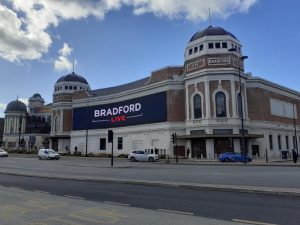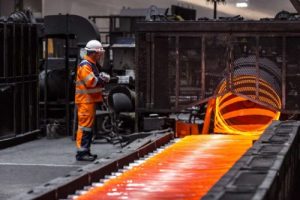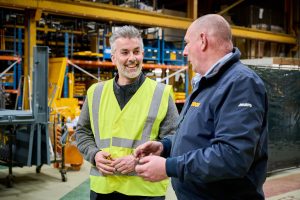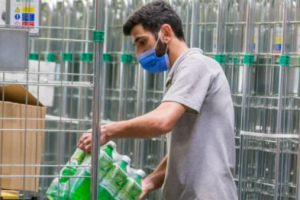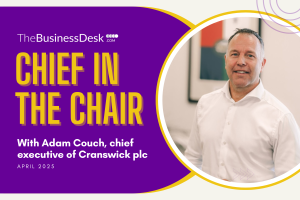How to put the environment on placemaking’s agenda

An expert panel put forward possible solutions to ensure building developments of the future take into account the needs of the environment.
They agreed the industry would need to take on board a very different way of thinking if it is to succeed in ensuring placemaking can play a key role in the fight against climate change.
The discussion took place at TheBusinessDesk.com’s breakfast seminar, which was held in partnership with Shulmans LLP and Bruntwood.
Angela Barnicle, chief officer for asset management and regeneration at Leeds City Council stressed the importance of authorities placing the requirements of the next generation at the centre of their policies and how Leeds has used this to declare a climate emergency.
She added: “Leeds has prided itself on becoming a child-friendly city and we have a mantra of putting children at the heart of everything we do. I think the youth movement we’ve seen earlier this year has pricked our conscience.
“How can we be a child friendly city if we’re not listening to our children?
“The child friendly approach allows us to be brave because this is not going to be easy. It’s going to challenge everything we do.”
“How do make sure our towns are thriving? We need to create communities where people want to be and where there are opportunities for human interaction. We don’t want Black Mirror-style digital dystopias where people constantly live their lives through a digital filter.
“If you can put your carbon footprint on your company balance sheet you’ll end up doing things a lot differently. We should remain curious and be brave about admitting what we don’t know.”
Chris Thompson, managing director of sustainable urban developer Citu, said: “There’s been a sea change in public awareness and understanding of the scale of the problem and the scale of the thinking we need to adopt.
“The climate emergencies which have been declared have put this on the political agenda. We’re going to have to make some tough decisions. We can’t keep going with the status quo and we’ll need to innovate our way to wards different solutions.”
He discussed some of the ways Citu look at doing things differently to challenge the status quo, continuing:
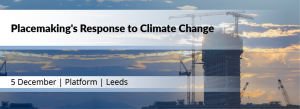
“Also, how do we make the most of places that already exist? Cars take up 40% of house building sites. If we take cars out of the picture we can triple the density of house building on a site.
“We need to live in properties which have a human scale, which feel safe and have a link to nature. These are fundamental things – we’re going back to basics, we’re not coming up with new ideas.”
He encouraged businesses to calculate their own carbon footprint, saying his own firm had done this and responded to the results by removing free car parking for its staff.
Chris Gorse, Professor of construction and project management at the School Of Built Environment, Engineering And Computing, said: “It’s important to get children involved, because that is the key to changing people’s minds about what a healthy environment should look like.
“Our lives are being shortened and our children’s lives are being shortened due to pollution and conditions such as asthma.
“We need healthy buildings that perform well because if they don’t they burn or create emissions which take lives. We’re all at fault at the moment – including me.”
“When we see developers that are achieving environmental benefits we must work out how we can get behind them. There organisations are prepared to take risks but that comes at a cost to them.
“It’s the smaller, medium-sized organisations which are leading change. The bigger organisations are getting on board in terms of their rhetoric but are committing to far less real change in percentage terms. They aren’t agile enough for the changes required.
April Marsden, an associate at architecture practice Bowman Riley, said before the 2008 recession there had been an effort to build homes more sustainably, but this dropped off the agenda and was replaced by an imperative to build: “As much as we can as cheap as we can, so we can make more profit.”
She added: “More recently there has been a realisation that we should be doing something about this, it has become more urgent.
“There needs to be a reappraisal of what we’re doing when we create the built environment. We should be looking at what we use to build with and where those materials come from.
“We have to look at how our planning and legal system operates.”
Amanda Beresford, a partner at Shulmans and head of the firm’s planning law team, picked up this topic adding: “We have to think about the planning policies we established in the past. If we’re looking at climate change are those policies fit for purpose today?
“Throughout the country local authorities have been encouraged to get development plans in place, which they then refer to when assessing planning applications.
“For instance if we’re to co-locate housing with renewable energy sources – something might have to give. If the scheme is in green belt land, does protecting green belt take priority in the decision making or the climate change agenda?”
Amanda added that its important to remember the world in which planning, placemaking and development operate has constraints and that it took years to get to this stage:”The development plans we have at the moment were driven by the need to provide enough housing. If we’re to look at these plans through the lens of achieving net zero carbon, we may need to change them, but these plans took years to put in place.”
The final thought from the panel was that perhaps Professor Gorse’s requirement for “agility” was key to everything from providing agility to planners to have the discussion around making developments more sustainable to builders looking at ways to make impact.




